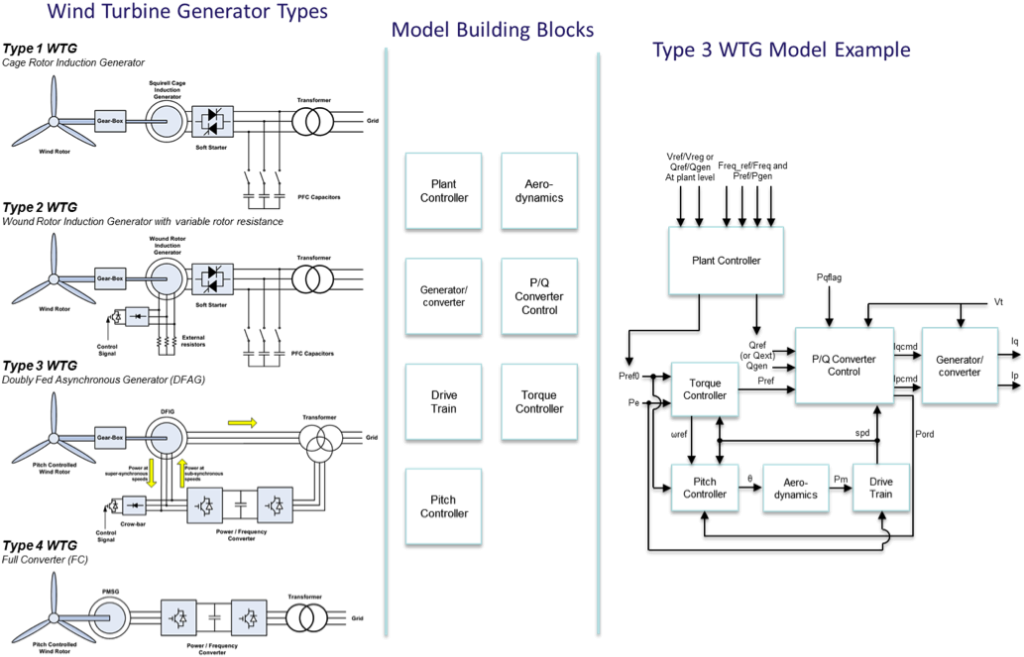Grid System Planning for Wind: Wind Generator Modeling
Because transmission planners are required to study wind technologies’ impact on the grid, wind generation dominates the interconnection queues and the need for generic, standard, and validated publicly available models for variable generation technologies. Sandia continues its effort to fully develop, validate, and disseminate wind-turbine generator models for use in power system planning and analysis.
This effort aims to reduce deployment barriers, specifically those relating to integrating wind energy generation into the electric grid. Developing and validating planning models for wind power plants continues to be an industry priority. The North American Electric Reliability Corporation has clearly stated that developing and improving access to validated, non-proprietary planning models is a prerequisite for large-scale variable generation integration. These models are reduced-order, positive-sequence models suitable for large-area transmission studies that are performed by grid operators and planners.
The U.S. Department of Energy strategies for grid system planning depend on strong partnerships with external stakeholders including regulators, state governments, system operators, utility, and transmission planners, who ultimately are responsible for implementing and integrating wind energy generation into their transmission and distribution systems. To that end, Sandia continues to coordinate and participate in the Western Electric Coordinating Council’s Renewable Energy Modeling Task Force, which has led the WTG model development effort in the United States. Sandia also maintains an active role in the international community and serves as the U.S. delegate for the International Electrotechnical Commission Subcommittee WG27: Electrical Simulation Models for Wind Power Generation.

The second generation of generic wind turbine generators models moved to a modular approach. That is, the models consist of smaller modules that are truly generic and usable for any appropriate renewable-energy system. Above, from left to right, are the main electrical components of the four types of WTGs, the various modules that are needed to represent these wind-turbine generators and utility-scale photovoltaic systems, and the Type 3 WTG model that utilizes all of the modules.
With Sandia leadership, models for all four WTG types have been developed and implemented in GE’s PSLF®, Siemens PTI PSS®E, and PowerWorld. In 2013, Sandia worked with partners to complete the implementation of second-generation WTG models, which are more modular and flexible. Sandia also worked with the Electric Power Research Institute and the National Renewable Energy Laboratory to develop a model validation tool for the Type 4 models.
Currently, Sandia is working to enhance capabilities of the renewable-energy plant controller module of the model to:
- interface with multiple WTG models in a single plant
- interface with shunt compensation
These WTG models will continue to evolve as new enhancements and features become available to operating wind power plants.